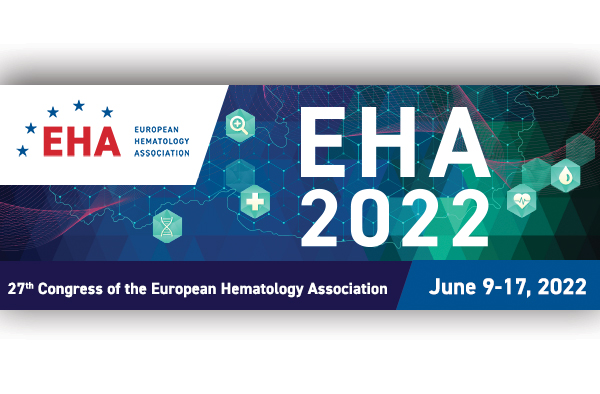From June 9th to 22nd the EHA 2022 Congress took place in Vienna.
Here a brief report concerning interesting new data on ITP.
Diagnosis.
- The diagnosis of ITP remains one of exclusion, and sometimes the differential diagnosis of an isolated thrombocytopenia may be tricky, especially with regards to myelodysplastic syndromes (MDS) presenting with isolated thrombocytopenia. Gonzalez-Lopez et al. (Abstract P1647) made an attempt to distinguish these two groups by bone marrow (BM) morphology and BM next generation flow cytometry. Of the 62 evaluated patients, 53 BM samples were analyzed by cytomorphology: 18 ITP and 10 MDS have been diagnosed, the remaining cases being unclassifiable. Flow-cytometry showed alterations in all groups, without a clear distinguished pattern, but a trend towards multilineage BM alterations in the MDS and unclassified groups. The results of this study underscore the problem of the differential diagnosis of an isolated thrombocytopenia, which in a not negligible proportion of cases remains unresolved even with bone marrow examination.
- Anti-platelet antibodies remain a debated tool which could be used both for ITP diagnosis and as factor predictive of response to treatment. However the role of such antibodies in clinical practice is not defined yet, mainly due to issues related to their measurement. Dong (Abstract PB2297 and PB2298) analyzed anti-platelet antibodies (GP-IIb/IIIa; GP-Ib/IX and GP Ia/IIa) by PAKauto ELISA kit in 154 newly diagnosed pediatric ITP patients treated with first-line therapy. Patients positive for anti-GP-Ib/IX had a worse response to corticosteroids +/- IvIg, and patients with anti-GP-IIb/IIIa had a more severe disease (meaning they needed a combined treatment). These reports underline another unmet need in ITP: the standardization of the antiplatelet antibody testing, which is nowadays still far from routine clinical application.
TPO-mimetics.
- Several abstracts focused on the treatment with TPO-mimetics, in particular in view of the achievement of a sustained response off-treatment (SRoT). Cooper et al. (Abstract S292) presented the results of the phase II TAPER trial. ITP patients were treated with eltrombopag as second-line therapy, and those who achieved and maintained a complete remission for 2 months could taper down and discontinue the drug. 105 patients were enrolled, 62% met the criteria for tapering and discontinuation, and SRoT was achieved at month 12 in 30% of patients. Ghanima et al. (Abstract P1638) compared platelet responses according to the time since ITP diagnosis, and found no difference in terms of platelet response and frequency and severity of bleeding across the groups. These reports confirm the feasibility of SRoT in nearly 30% of ITP patients who start eltrombopag therapy, and point out 2 evidences: response rates to eltrombopag given earlier during the course of the disease are similar to those obtained during the chronic phase; the probability to achieve SRoT is similar in patients who start the tapering being or not in complete remission.
- In order to shed light on the molecular mechanisms of eltrombopag refractoriness, Gonzalez-Lopez et al (Abstract P1639) reported the results of an NGS analysis who evaluated 108 genes related to eltrombopag mode of action, comparing 35 refractory patients to 35 controls who responded to treatment. 13 variants were significantly different between the two populations, some of them already described as associated with solid cancers, but most of them of uncertain significance, that will need further work to be established.
New drugs.
- Among emerging treatment options in ITP, rilzabrutinib is an oral Bruton tyrosine kinase inhibitor, which has already shown its efficacy and tolerability in a phase I/II trial. Kuter et al. (Abstract S291) described the long-term extension outcomes of patients receiving the maximum dose of rilzabrutinib 400 mg twice a day. 45 heavily pretreated patients initiated treatment, platelet response was achieved in 40%. 16 patients proceeded to long-term extension, and a platelet count ≥ 50.000/mmc was maintained for the majority of the weeks of observation (a median of 88%). Of note, the majority of patients was receiving a concomitant medication (TPO-RAs +- corticosteroids).
ITP and COVID-19.
- The topics of ITP secondary to or exacerbated by COVID-19 infection or vaccination have also been addressed. A report from the US PDSA (Platelet Disorder Support Association) patient registry showed that one third of ITP patients experienced a platelet count drop following either COVID-19 infection or the vaccine, generally mild and recovered within 1 month (DiRaimo et al. Abstract P1637). The British guidelines for the diagnosis and treatment of VITT (vaccine-induced thrombotic thrombocytopenia) were presented, and as well as the guidelines for COVID-19 vaccination of patients with ITP.
For the full-texts of the abstracts and other reports, visit ehaweb.org
Dr.ssa Elisa Lucchini
SC Ematologia
Azienda Sanitaria Universitaria Giuliano Isontina
Ospedale Maggiore, Trieste

